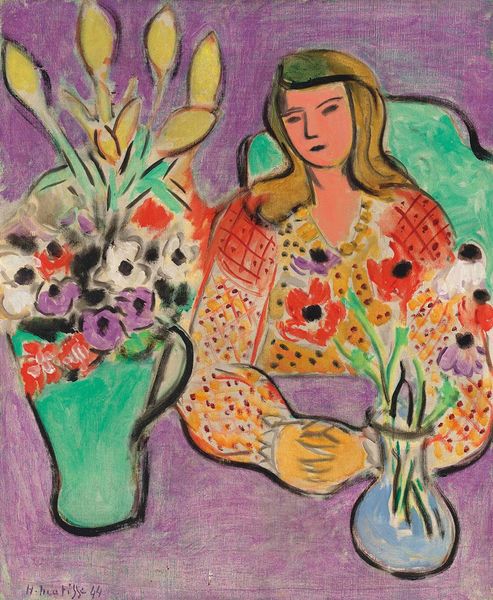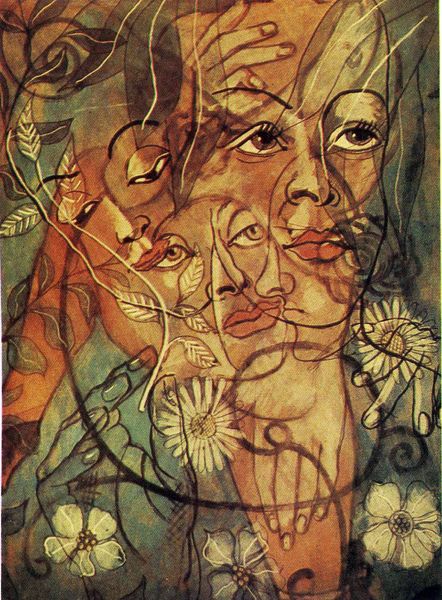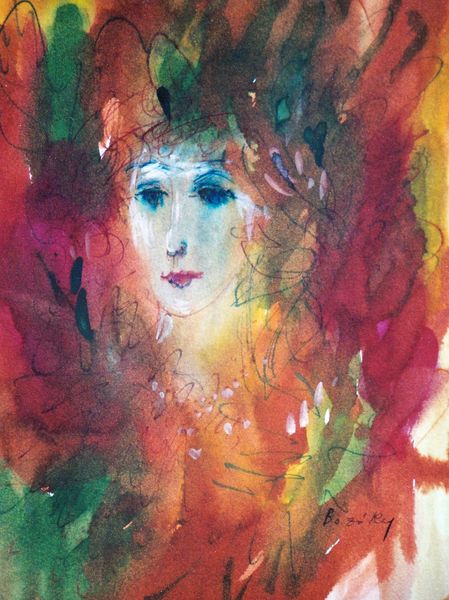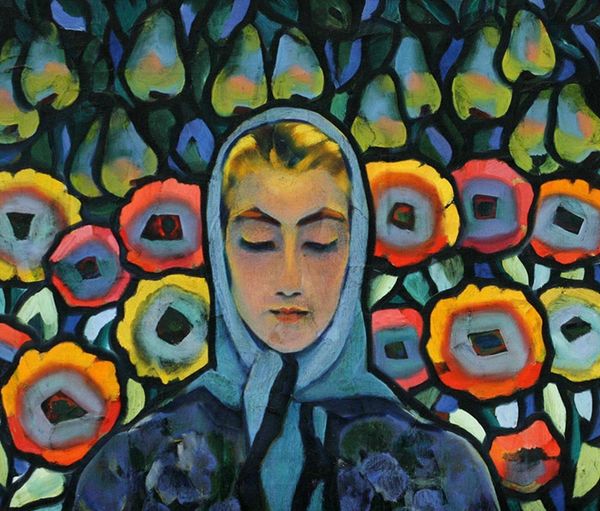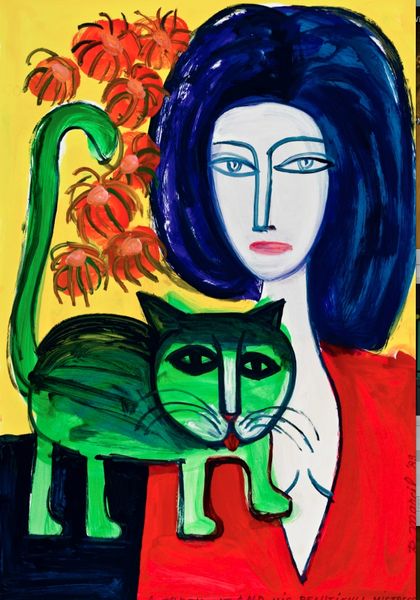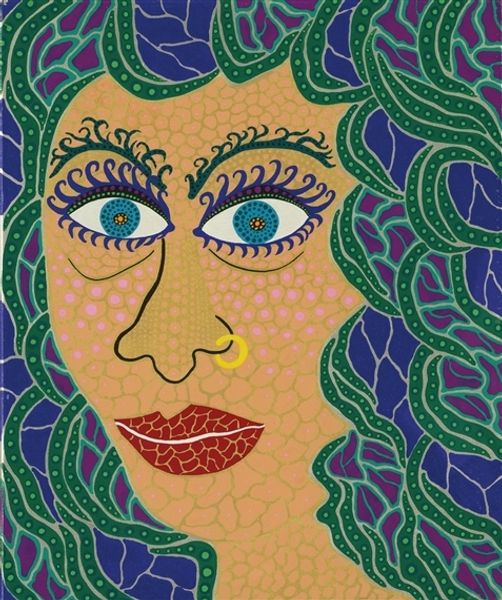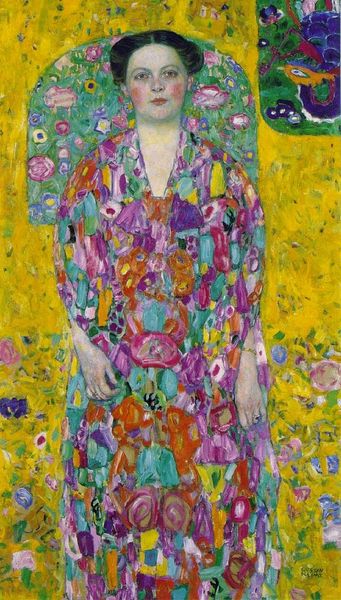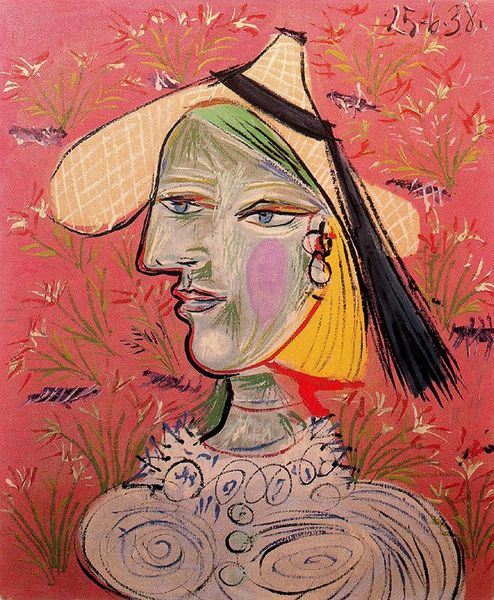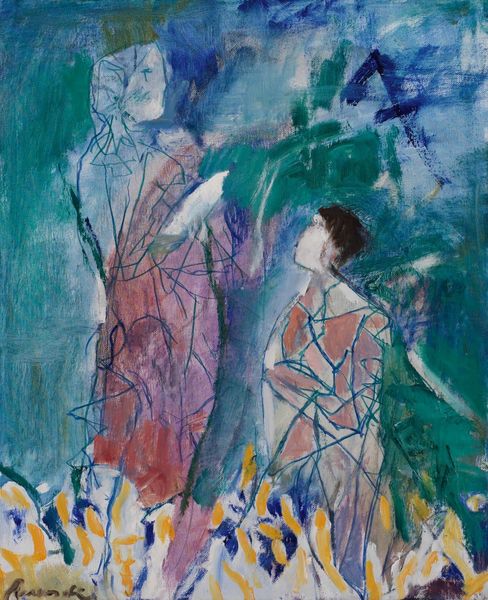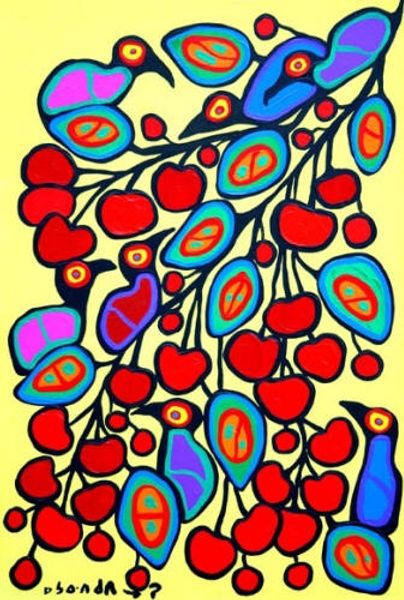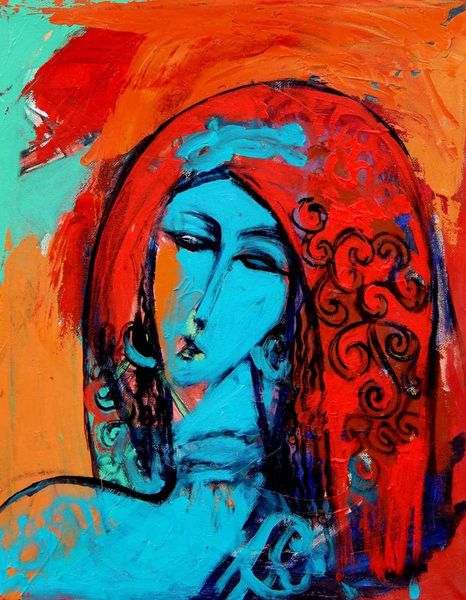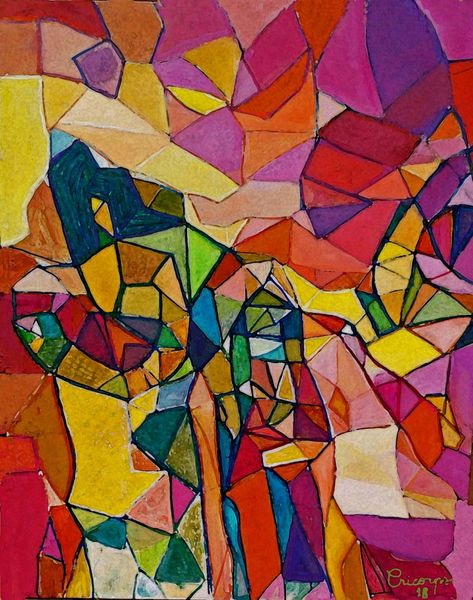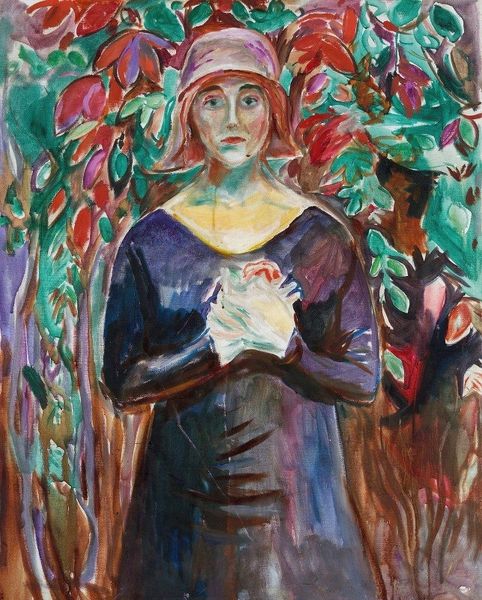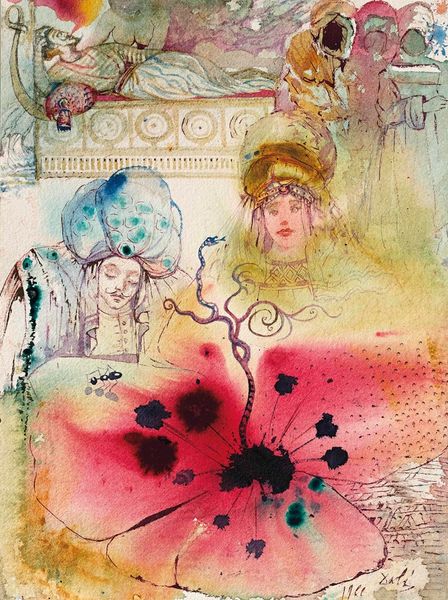
fibre-art, weaving, textile
#
portrait
#
fibre-art
#
weaving
#
textile
#
figuration
#
decorative-art
Copyright: Carles Delclaux Is,Fair Use
Editor: Here we have Carles Delclaux Is's "Primavera De Verge (fragment)" from 1980, a fiber art piece. It's so vibrant! It almost looks like a tapestry; a lady surrounded by a heart and flower motif. How should we read it? Curator: It's interesting how Delclaux Is uses the labor-intensive process of weaving, traditionally seen as craft, to create what one might consider "high art." Notice how the repeated motifs and vibrant colors subvert traditional notions of the unique artwork. What do you think this repetition does? Editor: I think the pattern almost flattens the figure, making it feel more like a design than a portrait, the opposite of what is expected of a figurative painting. Curator: Exactly. Consider the social context in 1980: the Pattern and Decoration movement was in full swing, challenging the dominance of Minimalism and its focus on industrial materials. Delclaux Is embraces color, ornament, and the "feminine" art of textile. The act of choosing to make such a piece with textile implies a commentary on both social conventions of gender and a push toward challenging preconceived notions of fine art. Where is value to be found, and for whom? Editor: I hadn’t considered that! It does reframe my view, thinking about the artistic choices involved in both medium and imagery. The artist almost weaponizes 'feminine' decorative tropes! Curator: Precisely. By elevating the traditionally undervalued, Delclaux Is reclaims artistic authority through materials and method. It asks us to question the ingrained hierarchies within the art world itself, and within systems of gender and worth. Editor: Wow, it gives me a lot to consider on my own studio practices, and materials too. Thanks! Curator: My pleasure, looking closely at process helps unravel some complex histories!
Comments
No comments
Be the first to comment and join the conversation on the ultimate creative platform.
